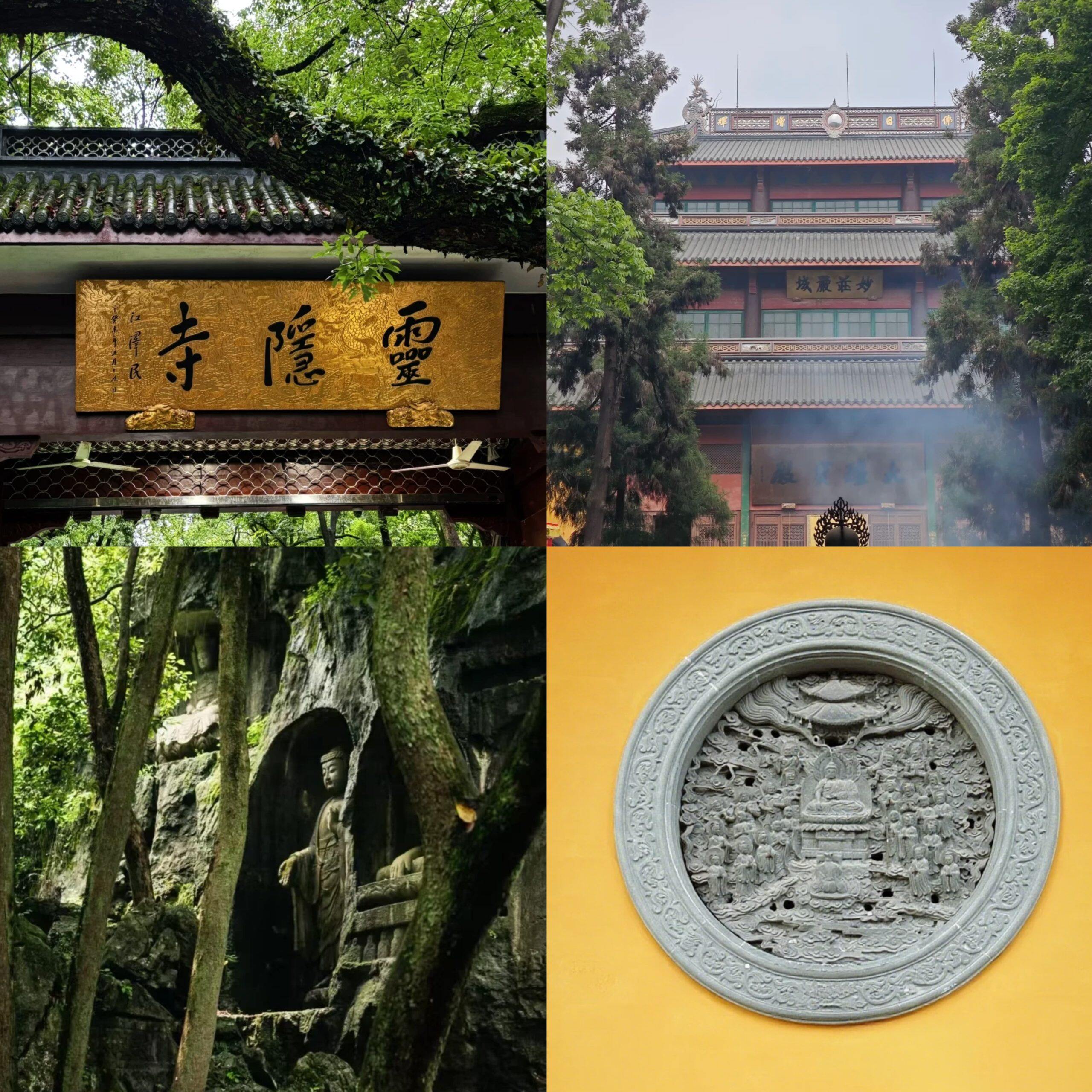Hello, I’m Mike Wang, a China travel expert with over 20 years of experience. During these two decades, I’ve traveled extensively around the world. I’d like to take you to Lingyin Temple in Hangzhou. This ancient temple holds thousands of years of stories and a rich cultural heritage. I’ll show you its history, architecture, and unique atmosphere.
Introduction
Lingyin Temple is located in the northwest side of West Lake in Hangzhou, Zhejiang Province. It is a famous ancient temple in the south of the Yangtze River.The temple was built in 326 AD and has a history of over 1,600 years. Legend has it that an Indian monk named Huili came to Hangzhou and was deeply attracted by the beautiful mountainous scenery. He thought there lived immortals and then he built a temple and named it”Lingyin”, which means hidden souls. It is said that the famous monk Jigong also took vows in the temple, which made Lingyin Temple even more famous.
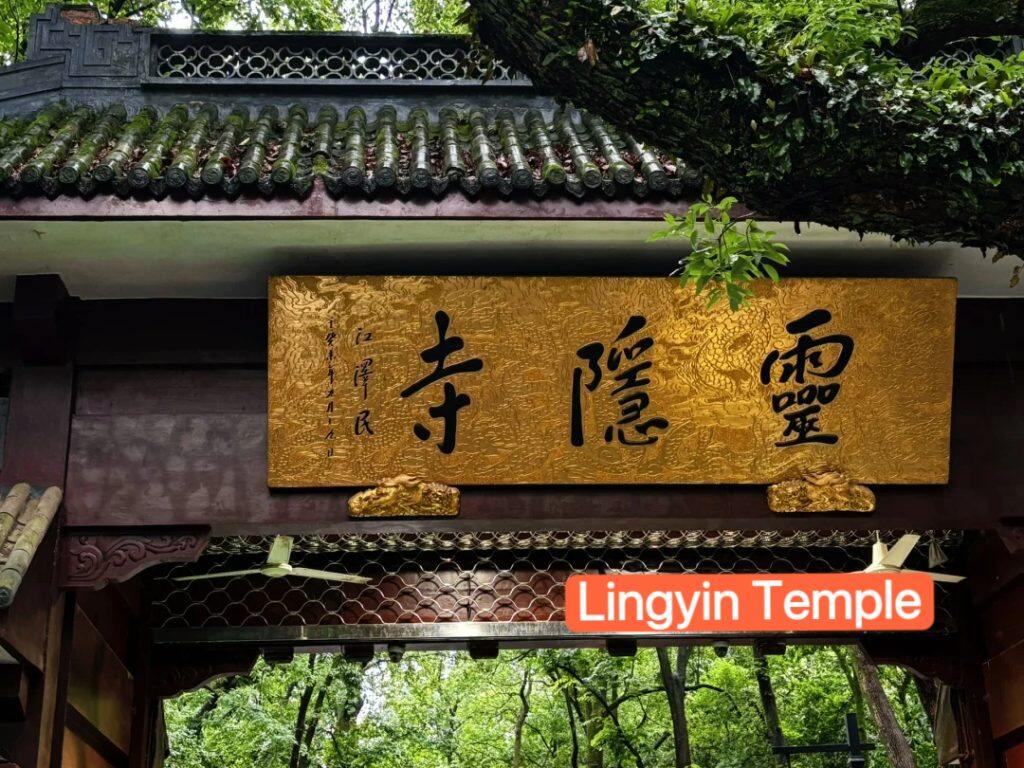
Tickets & Opening Hours
Entrance Fees
Lingyin Temple is located within the Feilai Peak Scenic Area, so you need to buy two separate tickets:
Feilai Peak Scenic Area Ticket (required first)
Price: ¥45(~$6.20 USD) per person
Booking:
Online: Use official platforms like the Hangzhou West Lake & Xixi National Wetland Park WeChat mini-program, or third-party apps like Fliggy or Meituan. During booking, enter your passport number as the identification document .
Onsite: Ticket offices near the entrance accept cash (CNY) and digital payments.
Entry: Scan the QR code from your booking confirmation or present your passport at the gate.
Lingyin Temple Incense Coupon
Price: ¥30(~$4.10 USD) per person
Purchase:
After entering Feilai Peak, buy this coupon at the Lingyin Temple ticket office (cash/credit cards/digital payments accepted).
No passport required for purchase, but keep the QR code or paper ticket for entry.
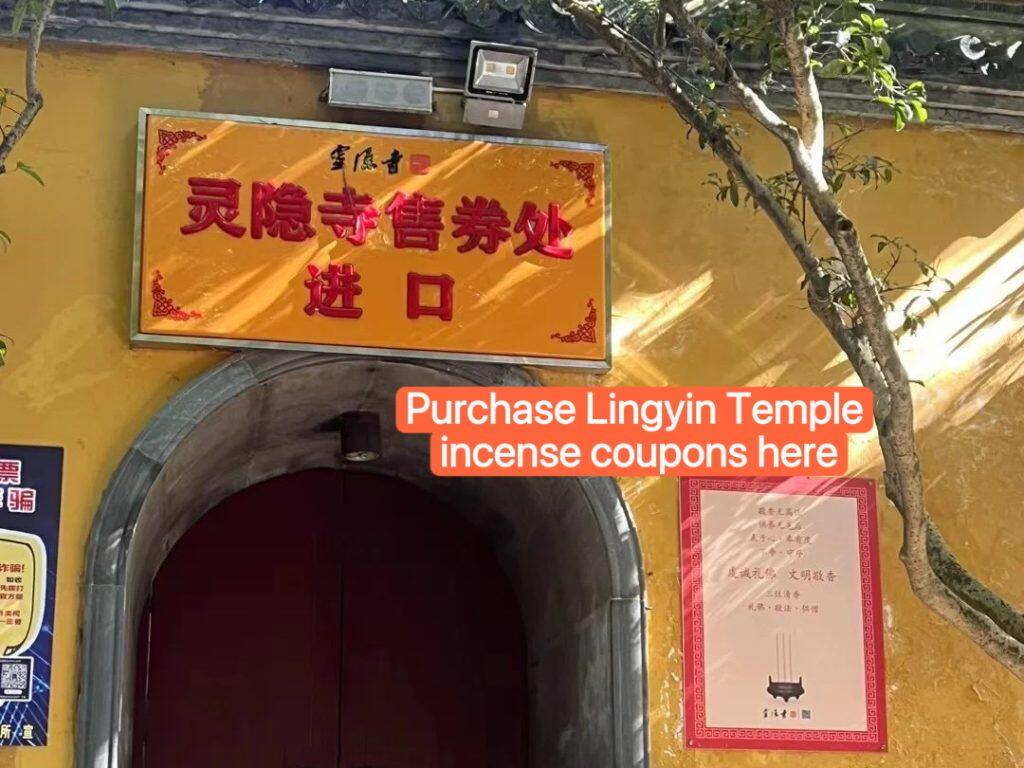
Payment Methods for Foreigners
Digital Payments
Alipay/WeChat Pay: Widely accepted. Link your international credit card (Visa, Mastercard, etc.) to Alipay’s overseas version for real-time currency conversion .
International E-Wallets:
Kakao Pay (South Korea), Touch ’n Go e-Wallet (Malaysia), and AlipayHK (Hong Kong) are supported at the temple and nearby merchants .
Credit Cards: Most ticket offices and shops accept Visa, Mastercard, and JCB.
Cash Payments
CNY Cash: Available at on-site foreign currency exchange counters (4 locations in the scenic area, including near Lingyin Temple) .
ATM Withdrawal: Use international cards at ATMs in the area (e.g., ICBC branches nearby) to withdraw CNY .
Digital Yuan (e-CNY)
For advanced users, download the Digital Yuan app and link your overseas credit card (Visa/Mastercard) to recharge the wallet. This allows seamless payments at ticket counters and shops .
Opening Hours
Winter (Oct–Apr): 06:30–17:45 (ticket sales end at 17:00)
Summer (May–Sep): 06:30–18:15 (ticket sales end at 17:30)
Peak Days (holidays/festivals): Opens 30 minutes earlier
Main Attractions Inside Lingyin Temple
The Feilai Peak
The Feilai Peak (Flying Peak) in Hangzhou, adjacent to Lingyin Temple, is adorned with over 300 Buddhist stone carvings spanning the Five Dynasties to the Yuan Dynasty, blending religious devotion with artistic brilliance.
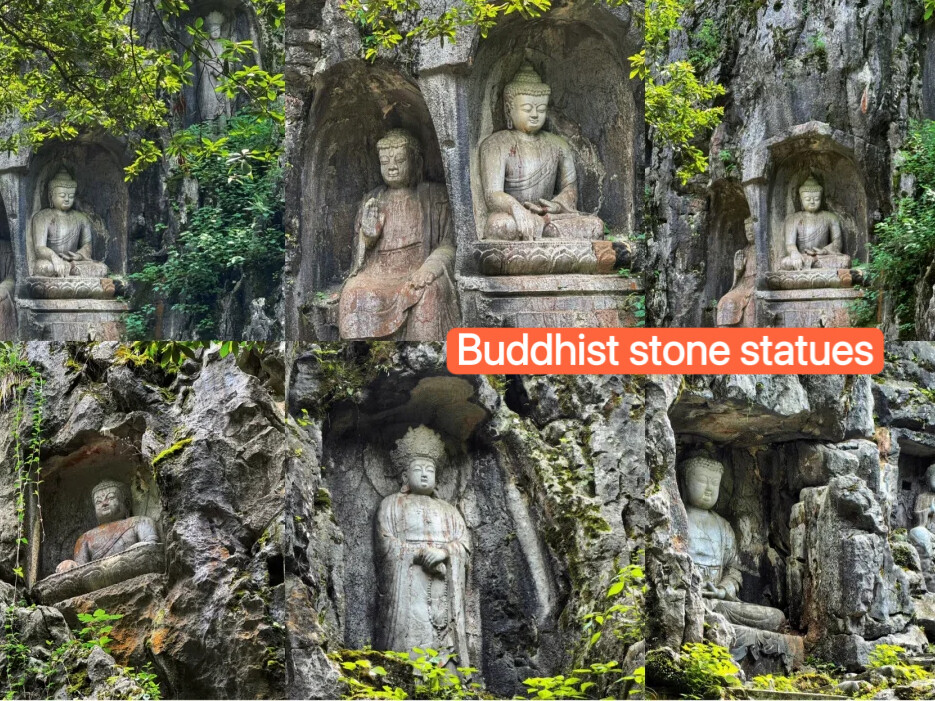
One iconic work is the Maitreya Buddha (laughing Buddha) from the Yuan Dynasty. Carved in 1346, this 5-meter-tall statue depicts Maitreya sitting casually, with a big smile and exposed belly, symbolizing joy and tolerance. Flanked by 18 arhats, it reflects the fusion of Mahayana Buddhism and folk beliefs, emphasizing happiness in everyday life.
Another masterpiece is the Avalokiteshvara (Guanyin) with a thousand hands. This delicate carving shows the Bodhisattva of Compassion surrounded by multiple arms, each holding a symbolic object—lotus, pearl, or scroll—representing her ability to aid all beings. It mirrors the Song Dynasty’s focus on compassion and spiritual protection.
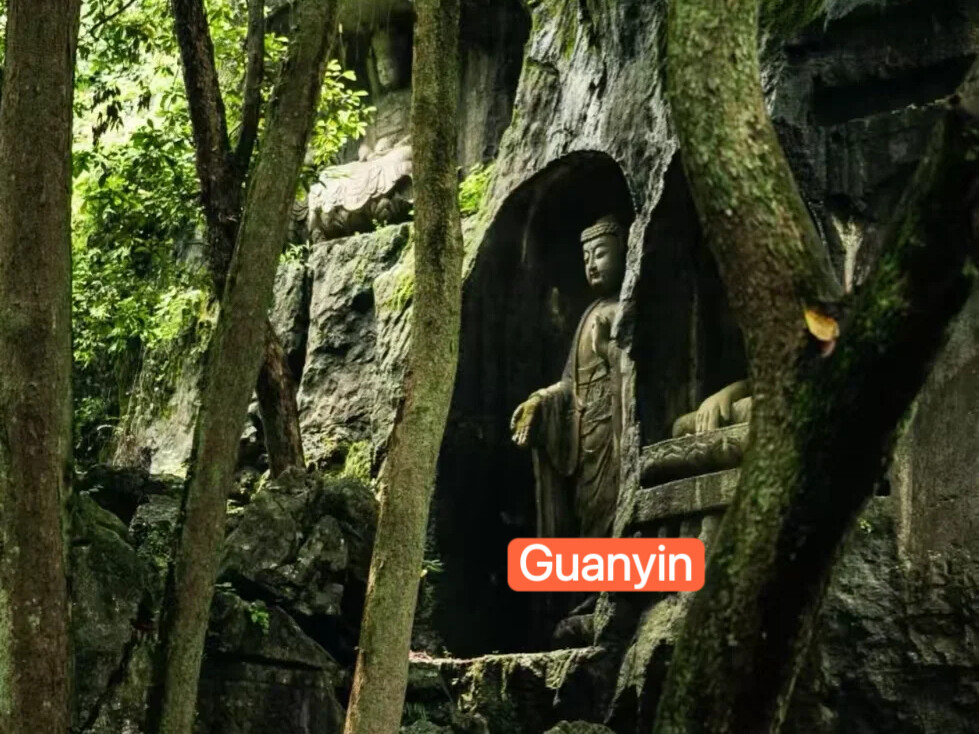
The Vajra Guardians near the peak’s entrance, muscular and fierce, date back to the Five Dynasties. They embody the Buddhist concept of protecting the faith from evil, their stern expressions contrasting with the serene Buddhas inside, showcasing the balance between strength and peace in Buddhist philosophy.
These carvings, blending Indian iconography with Chinese artistic styles, tell stories of faith, tolerance, and protection, making Feilai Peak a living museum of Buddhist culture.
Hall of Five Hundred Arhats
A masterpiece of Buddhist art, it’s a “卍” – shaped hall with 3,116㎡, blending Qing – style architecture.
Its highlight: 500 bronze arhats, each 1.7m tall, 1 ton heavy—China’s largest such collection. No two share the same expression: some smile gently, others gaze sternly, capturing life’s nuances.
At the center rises a 12.6m bronze structure honoring four sacred mountains, a Guinness record holder. More than statues, it’s a journey through Buddhist philosophy, showing how art embodies spiritual wisdom.
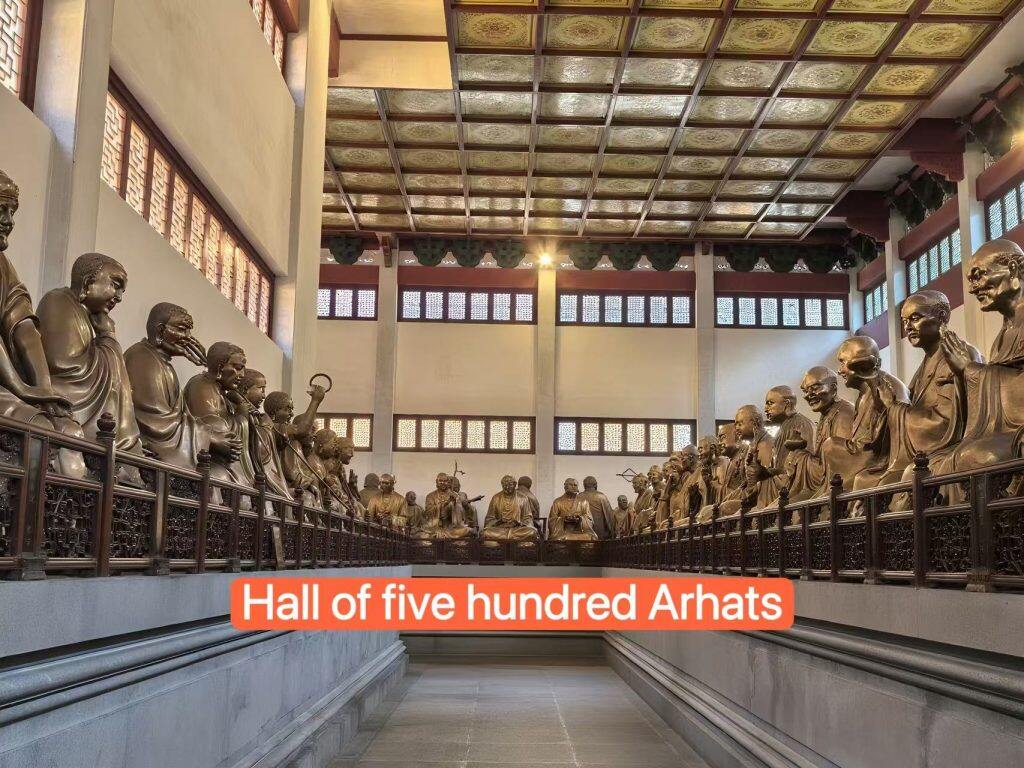
Transportation: How to Get There
From Hangzhou City Center
🚌Bus: Public Bus No. 7, 807, or Y2 will take you directly to Lingyin Temple. Fares are around 2–4 RMB.
🚕Taxi/Didi: Around 25–40 RMB from West Lake area (~15–20 minutes).
🚴Biking: If you’re adventurous, Hangzhou’s public bike-sharing system is an eco-friendly option.
Tip: If you’re combining West Lake and Lingyin in one day, start with Lingyin in the morning and return to West Lake for sunset.
Experiences & Activities
Morning Prayer and Chanting
It is a very sacred act in China. If you also want to apply it, you should contact the temple’s guest hall in advance to inquire about visitor availability. If approved, arrive around 4:30 AM, dress modestly (avoid revealing clothing), and remain silent throughout the visit, avoiding any disruption to the monks’ rituals. Simply soak in the solemn atmosphere of Buddhist practice.
Burning Incense for Good Luck
let me guide you through incense – offering at Lingyin Temple, a sacred Buddhist practice in China.
First, take three incense sticks from the temple entrance, which are free (avoid more than three sticks). If you want more, you need to buy it.
Before entering halls, light the incense gently (use candles, not matches directly). Wave to extinguish, never blow. Hold them with both hands, palms up, at chest level, and bow slightly three times towards the main hall to show reverence.
Then, place the incense in the censer in front of the hall. You may bow again after placing.
Inside halls, avoid loud talk or touching statues. If making wishes, focus sincerely—no excessive demands.
Remember: It’s about faith, not form. Respect the serenity, and follow monks’ guidance if unsure.
Practical Tips & Etiquette
here are essential guidelines for visiting Lingyin Temple to ensure a respectful and culturally appropriate experience:
Dress Code:
Opt for modest attire covering shoulders and knees—avoid shorts, tank tops, or short skirts. This shows respect for the sacred environment.
Threshold Etiquette:
When entering halls, step over thresholds gently, never step on them. This tradition stems from respecting the temple’s spiritual “boundary” and is a sign of reverence.
Behavior in Halls:
Maintain absolute silence. Keep phones muted. Never touch statues, Buddha images, or ritual objects. Avoid photos/videos during ceremonies; some areas may ban photography entirely.
Incense Rituals:
If offering incense, purchase 3 sticks (a symbolic number) from temple stalls. Light them with candles, never blow them out—wave to extinguish. Bow three times before placing in censers, and avoid pushing in crowds.
Interacting with Monks:
Do not disturb monks during prayers or meditation. If approaching, speak softly and briefly; avoid intrusive questions.
Timing & Crowds:
Arrive early (before 10 AM) to avoid crowds. Morning prayers (4:30–6:00 AM) are typically for monks only—check in advance if visitors may observe.
General Decorum:
No eating, drinking, or smoking in main worship areas. Follow staff guidance and signage.
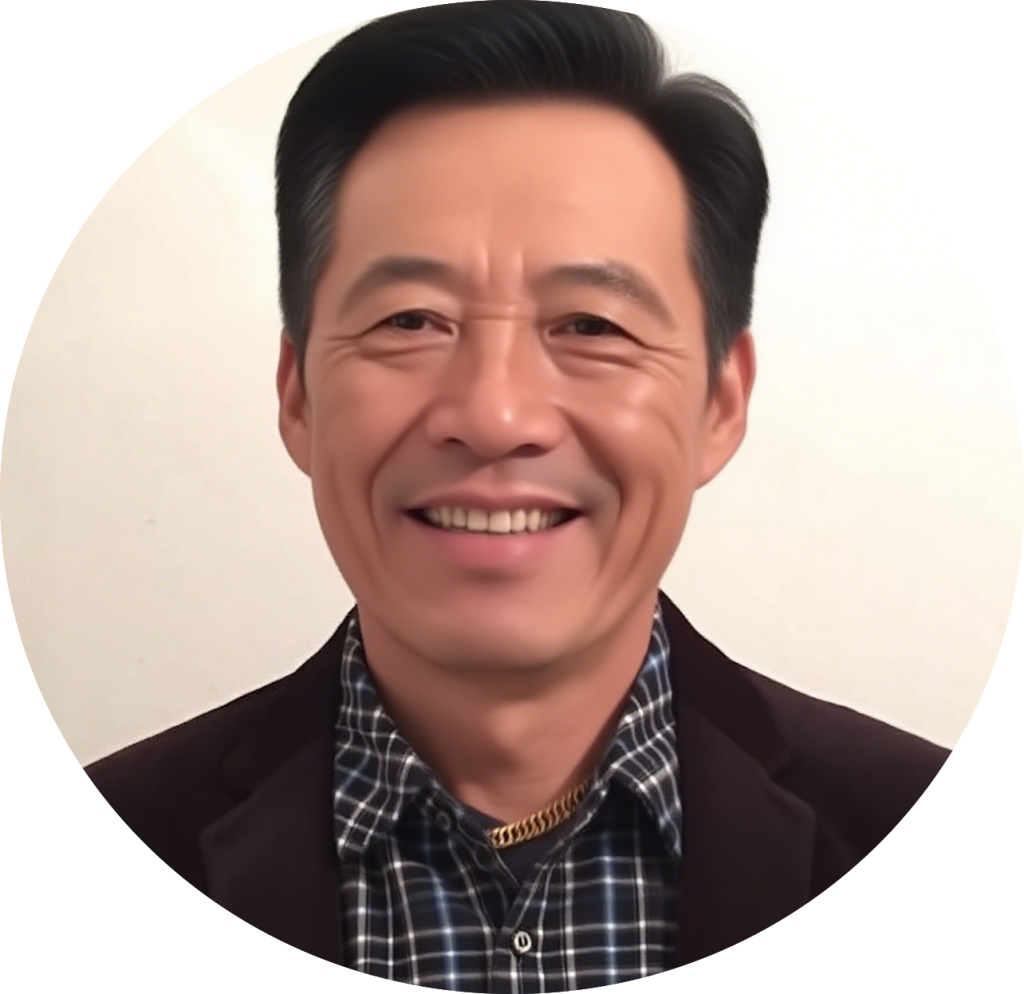
Mike Wang
Mike Wang is a 40-something Chinese travel expert, has explored the world,
hosting numerous foreign visitors. He’s deeply interested in and knowledgeable
about ancient cultural architectures, enriching journeys with his insights.
Essential Hangzhou Travel Resources
1、Core Hangzhou Attractions
Visit Lingyin Temple in China: Tips, Tickets, and Attractions
Qiandao Lake:Ultimate Travel Guide & Tips
Hangzhou Songcheng: Time-Travel Experience In China
Xixi Wetland Nature Park:A 2025 Travel Guide
2、Must-Stay Hangzhou Hotels
Hangzhou’s Top 10 Family Hotels: Perfect for Your Trip
Best View Hotels in Hangzhou: Complete Guide

